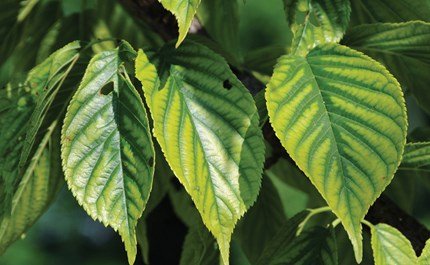Plant disease symptoms caused by plant viruses
Plant viruses can be identified by the symptoms they mark on the host. The symptoms may cause by its age, nutrition and other environmental factors. A few common symptoms are given as follows:
Chlorosis. Due to the presence of plant viruses, the chlorophyll of the green parts disappears at places, leaving yellowish spots, this is known as chlorosis. The presence of yellow spots at places, in the green tissue appears like a ‘mosaic’ pattern and therefore, the diseases with such symptoms are known as ‘mosaic’ diseases.
The viruses causing most mosaic diseases are mechanically transmitted and usually have aphid vectors in nature. Generally they do not stop flowering or affect the dormancy of buds.
 |
| Chlorosis |
Yellows. When the chlorophyll disappears completely (chlorosis, yellowing, bronzing or reddening) from the host tissue, the organs turn yellow and the symptoms are known as yellows. These viruses are generally transmitted by leaf-hoppers, and they are relatively sensitive to heat treatment.
 |
| Yellows |
Vein clearing and vein banding. The disappearance of chlorophyll along the veins of the leaves is known as vein clearing and when chlorophyll surrounding the veins disappears the symptom is known as vein banding.
 |
| Vein clearing and vein banding |
Necrosis. The brownish spots due to the death and ultimate drying of the tissue are known as necrotic spots and the phenomenon is known as necrosis. Necrotic spots are also known as lesions.
 |
| Necrosis |
Ring spots. These symptoms are characterized by the appearance of chlorotic or necrotic rings on the leaves and sometimes also on the fruit and stem. Most ringspot—causing viruses are being transmitted by nematodes.
 |
| Ring spots |
Other symptoms. Bunchy top, galls, hypertrophy, atrophy, rolling (leaf roll of potato), curling (leaf curl of potato), crinkling of plants are various other symptoms usually produced on the host plants by viruses.
The most important symptoms developed by mycoplasma like organisms (MLO’s) are little leaf and yellows.
Little leaf. This denotes reduction in the leaf lamina, typical of the mycoplasma infection in brinjals, tomatoes and cotton.
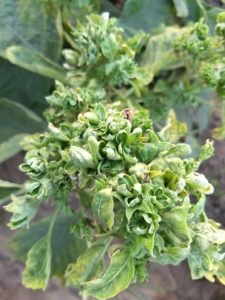 |
| Little leaf |
Yellows. When the chlorophyll disappears completely from the host tissue, the organs turn yellow and the symptoms are known as yellows. These are characteristic symptoms of mycoplasma plant diseases.
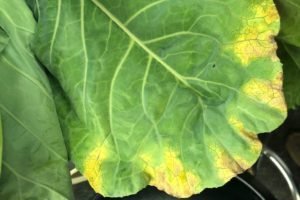 |
| Yellows |
Grassy-shoot. This is applied for the grassy appearance of affected shoots. The shoots become dwarf and stunted, e.g., grassy shoot of sugarcane and grassy shoot of rice.
 |
| Grassy-shoot |
Big bud. The fruit bearing shoots become straight, thickened and malformed into thick dark green structures, e.g., big bud of tomato caused by mycoplasma.
 |
| Big bud |
Phyllody. The apical shoots of the affected plants are being converted into leafy structures, e.g., phyllody of sesamum, phyllody of sann hemp, etc.
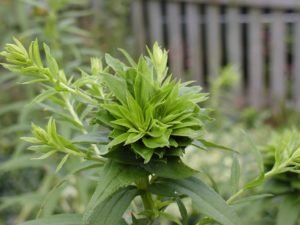 |
| Phyllody |
Plant disease symptoms caused by nematodes
The symptoms caused by nematodes appear on the roots as well as on the above ground parts of plants. The symptoms on the roots appear as hypertrophy, root knots or root galls, root lesions, excessive root branching, injured root tips and root rots.
The root symptoms are usually accompanied by the malformation and blistering of the above ground parts of the plants, twisting or distortion of leaves and stems, and abnormal development of the floral parts. Certain nematodes attack grains forming galls full of nematodes in place of seed.
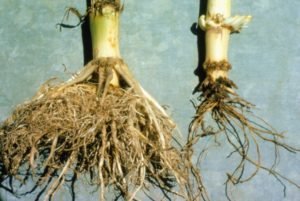 |
| Root knot |
Root knots, cockle, hard smut, false ergot and brown root rot are common symptoms. These infestations bring about deficient nutrition resulting in partial or complete wilting in advanced cases.
